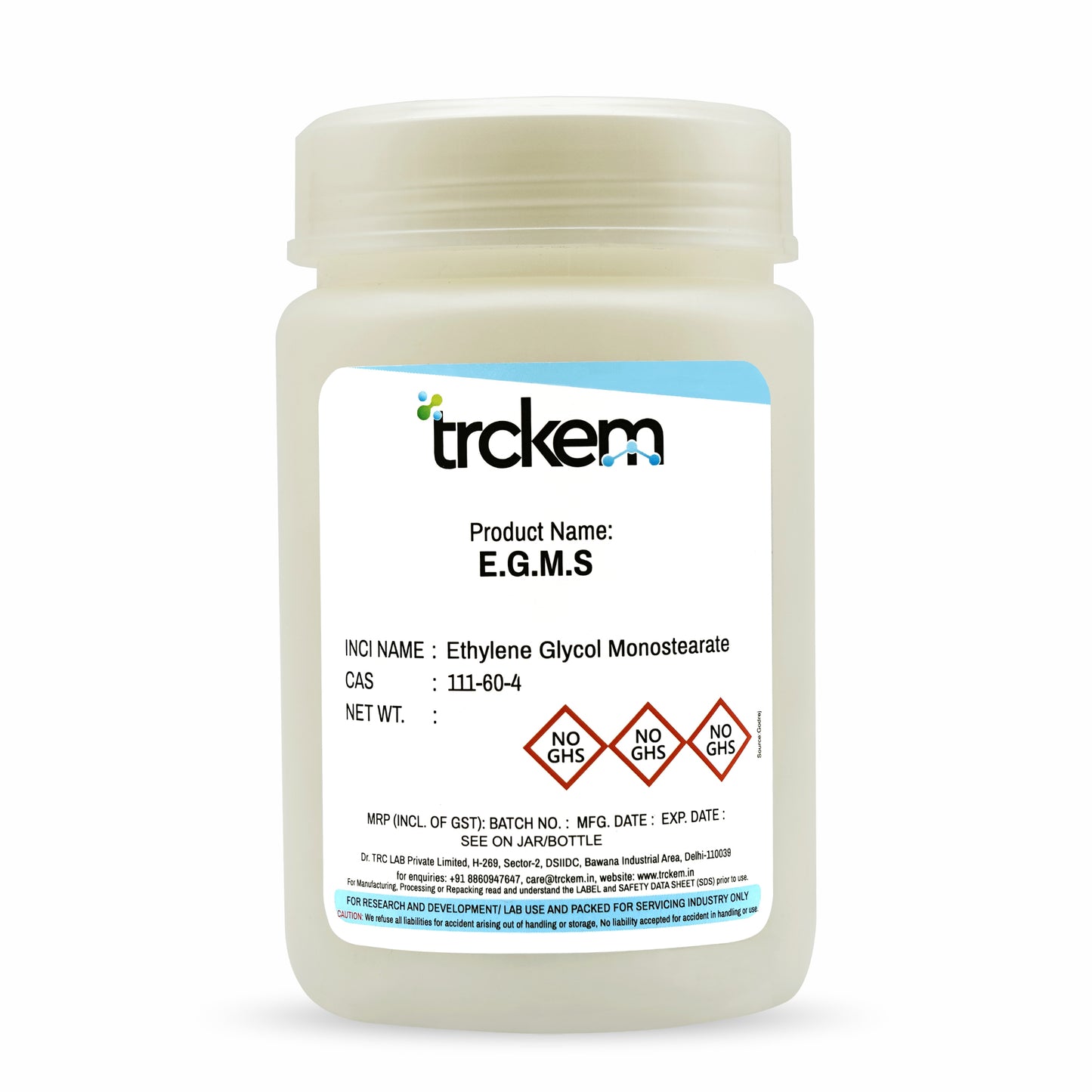




THE STORY OF EGMS (Ethylene Glycol Monostearate)

EGMS: The Creamy Opacifier for Rich & Luxurious Cleansing Products
EGMS (Ethylene Glycol Monostearate) is a premium opacifier and pearlizing agent used in shampoos, body washes, and liquid cleansers to create a creamy, milky, elegant appearance.
It also functions as a mild emollient, improving the softness and conditioning feel of personal-care products.

A Fatty Acid Ester Designed for Opacity & Creamy Texture
EGMS is derived by the esterification of stearic acid (vegetable source) with ethylene glycol.
It differs from EGDS by providing more opacity and creaminess, with less intense pearlescence.
TRCkem supplies cosmetic-grade EGMS with:
• High purity
• Consistent melting profile
• Excellent dispersibility in surfactant systems

Opacify. Enrich. Enhance.
EGMS offers multiple benefits in personal-care formulations:
✅ Produces a creamy, opaque, milky appearance
✅ Softens formula texture for a rich sensory feel
✅ Works synergistically with EGDS for pearl + opacity
✅ Acts as a mild emollient for smoother skin feel
Used in: cleansing milks, moisturizing body washes, baby washes, face cleansers, and shampoos requiring premium opacity.

Easy-to-Process Fatty Ester for Stable Creamy Formulations
• Typical use level: 0.5–3% in surfactant systems
• Melt in the heated surfactant phase (60–70°C) for best dispersion
• Opacity develops as product cools
• Compatible with SLES, SLS, CAPB, Glucosides & other surfactants
• Safe, biodegradable, and non-irritating fatty ester
• Store in cool, dry conditions away from heat and moisture
• Approved globally for cosmetic use
Formulator’s Queries, We Answered
Q1. What is E.G.M.S.?
E.G.M.S. stands for Ethylene Glycol Mono-Stearate (often abbreviated EGMS). It is the mono-ester of ethylene glycol and stearic acid and is commonly supplied as white flakes or a pale powder. It’s used in cosmetics to modify texture, create a pearlescent effect, opacify liquids, and help stabilize emulsions.
Q2. What is the INCI name and CAS number for this chemical?
INCI name: Glycol Stearate
CAS number: 111-60-4
Q3. What functions does EGMS perform in personal care formulations?
EGMS is used as a:
- Pearlizer / Opacifier — creates a pearly sheen in shampoos, shower gels and other rinse-off liquids.
- Co-emulsifier / Emollient — contributes body, creaminess and improved skin feel in lotions and creams.
- Viscosity / bodying agent — increases thickness and can stabilize surfactant systems
Q4. Typical usage levels?
Common use concentrations vary by product type: 1–2% in creams/lotion for body/opacity effects; 2–4% in cleansing systems for pearlizing; some paste/solid systems may use higher levels (up to ~10%) for strong bodying. Start with a lab trial at the low end and optimize for desired pearliness and viscosity
Q5. Physical / formulation properties formulators should know?
EGMS is largely insoluble in water (near-insoluble) but soluble in alcohols and many organic solvents. Its lamellar crystalline structure scatters light, producing pearlescence and opacity. It can be used as part of the oil phase or added via melting/dispersing depending on the formulation process







